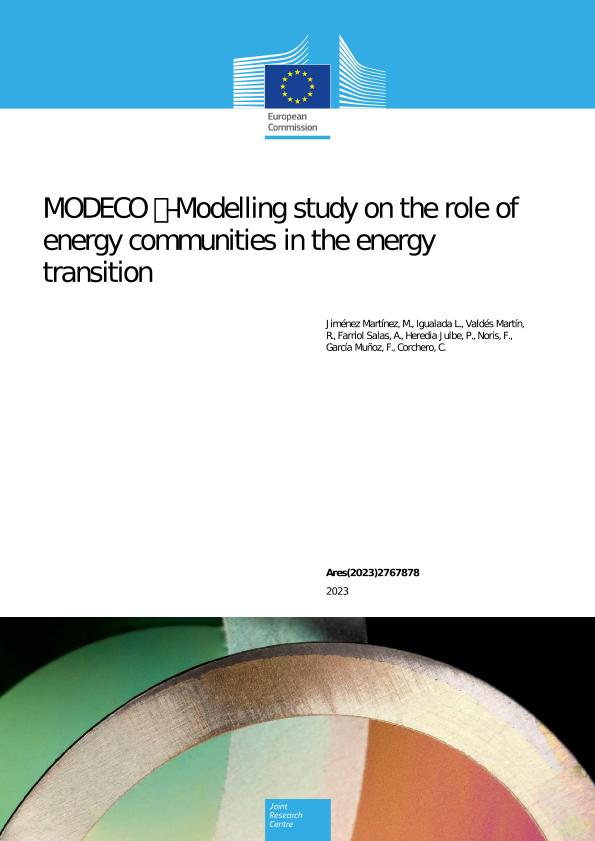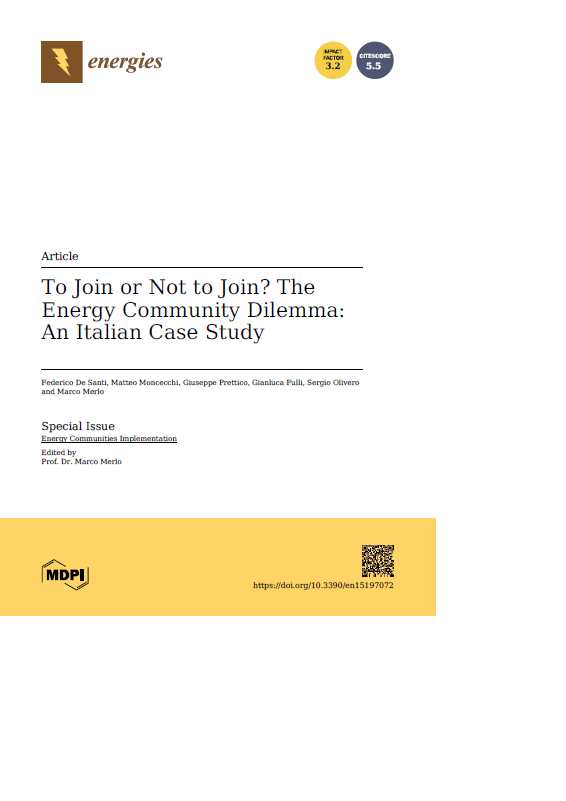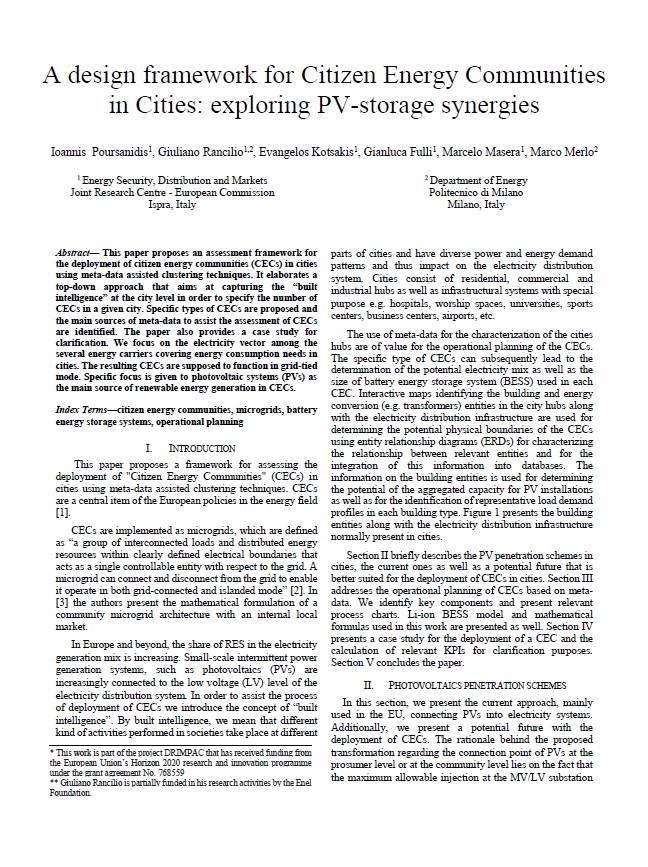Context
Energy communities organise collective and citizen-driven energy actions that help pave the way for a clean energy transition while moving citizens to the fore. They contribute to increasing public acceptance of renewable energy projects and make it easier to attract private investments in the clean energy transition. At the same time, they have the potential to provide direct benefits to citizens by increasing energy efficiency, lowering their electricity bills and creating local job opportunities.
Our role and products
- We assist energy communities - starting from the Italy’s first-of-a-kind energy community - with data, know-how, and simulation capacity.
- We developed a web-based tool that can support the planning of new communities by private citizens, public institutions and small-medium enterprises.
- We also proposed an assessment framework for the deployment of citizen energy communities in cities using meta-data assisted clustering techniques.
Main publications

2023 - MODECO - Modelling study on the role of Energy Communities in the energy transition
This report assesses the influence on the operational and investment decisions of five representative Energy Community typologies (in Germany and Spain) of a variety of external factors, namely energy taxes, levies and tariff schemes. In particular, four different schemes were tested: No Charges, Time-of-Use (TOU), Subscription Bandwidth and Peak power. The study indicates that none of the evaluated tariff structures poses significant barriers to Energy communities’ future expansion. As long as investment and operational costs are competitive against electricity prices, communities will have incentives to form and invest in the energy assets that better fit their demand and geographical conditions. The TOU tariff, however, could lead to overinvestments in batteries under certain pricing conditions. The introduction of power-based charges, e.g. Bandwidth and Peak power, avoids this pitfall even in future scenarios with high price differentials. The Bandwidth tariff also offers an opportunity to adapt Use-of-Network charges to a future system with high prosumers participation as it ensures higher grid cost recovery. Considering the impacts of self-generation while still recognizing its benefits is relevant as the study shows that self-consumption is the largest economic benefit in the short-term, but energy arbitrage and electricity sales will become relevant incomes for future Energy communities.

2022 - To Join or Not to Join? The Energy Community Dilemma: An Italian Case Study
Energy Communities (EC) are becoming a major driver to foster the energy transition in Europe and the regulatory framework adopted by each Member State (MS) plays a key role for a prosperous deployment of ECs. This paper is thus divided into two layers. The first layer of this paper addresses the current regulations introduced by MSs regarding ECs, providing a critical comparison of each solution used. The second layer of research concerns the introduction of a Mixed Integer Linear Programming (MILP) optimization algorithm early studied by some of the authors furtherly developed to assess the conditions that favour prosumers’ participation to ECs. Both these models have been tested on a case study located in the city of Magliano Alpi, in the north of Italy. The results demonstrate that the proposed methodology correctly evaluates the key parameters influencing participation of citizens in ECs and indicate that for the Italian EC under study, there is the possibility to further expand the capacity installed without undermining the profitability of investment.

2019 - A design framework for Citizen Energy Communities in Cities: exploring PV-storage synergies
This paper proposes an assessment framework for the deployment of citizen energy communities (CECs) in cities using meta-data assisted clustering techniques. It elaborates a top-down approach that aims at capturing the “built intelligence” at the city level in order to specify the number of CECs in a given city. Specific types of CECs are proposed and the main sources of meta-data to assist the assessment of CECs are identified. The paper also provides a case study for clarification. We focus on the electricity vector among the several energy carriers covering energy consumption needs in cities. The resulting CECs are supposed to function in grid-tied mode. Specific focus is given to photovoltaic systems (PVs) as the main source of renewable energy generation in CECs.
